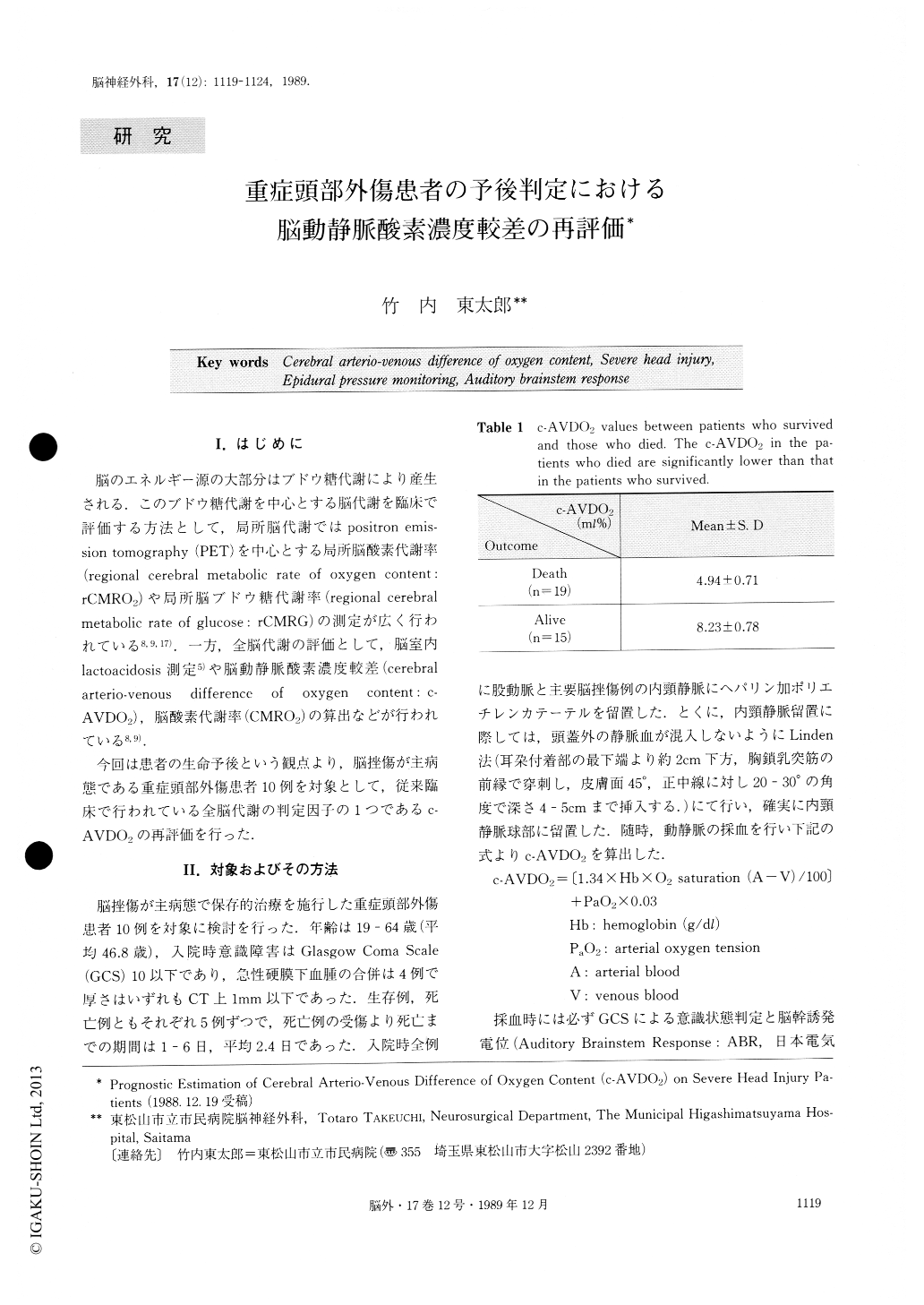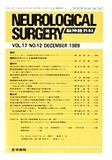Japanese
English
- 有料閲覧
- Abstract 文献概要
- 1ページ目 Look Inside
I.はじめに
脳のエネルギー源の大部分はブドウ糖代謝により産生される.このブドウ糖代謝を中心とする脳代謝を臨床で評価する方法として,局所脳代謝ではpositron emis—sion tomography(PET)を中心とする局所脳酸素代謝率(regional cerebral metabolic rate of oxygen content:rCMRO2)や局所脳ブドウ糖代謝率(regional cerebralmetabolic rate of glucose:rCMRG)の測定が広く行われている8,9,17.一方,全脳代謝の評価として,脳室内lactoacidosis測定5)や脳動静脈酸素濃度較差(cerebralarterio-venous difference of oxygen content:c—AVDO2),脳酸素代謝率(CMRO2)の算出などが行われている8,9).
今回は患者の生命予後という観点より,脳挫傷が主病態である重症頭部外傷患者10例を対象として,従来臨床で行われている全脳代謝の判定因子の1つであるc—AVDO2の再評価を行った.
Cerebral arterio-venous difference in oxygen content (c-AVD02) was calculated in 10 patients suffering from severe head injury with brain contusion as the chief morbid condition 〔consciousness on admission: under 10 on the Glasgow Coma Scale (GCS); 5 sur-vived and 5 died〕, in order to re-evaluate the import-ance of c-AVDO2 as a factor of prognosis evaluation in patients with severe head injury. Indwelling catheters were placed in the femoral artery and jugular vein on the side of the brain contusion in all patients on admis-sion, and blood samples were collected when necessary for calculation of c-AVDO2.

Copyright © 1989, Igaku-Shoin Ltd. All rights reserved.


